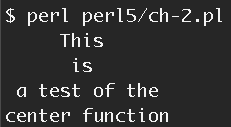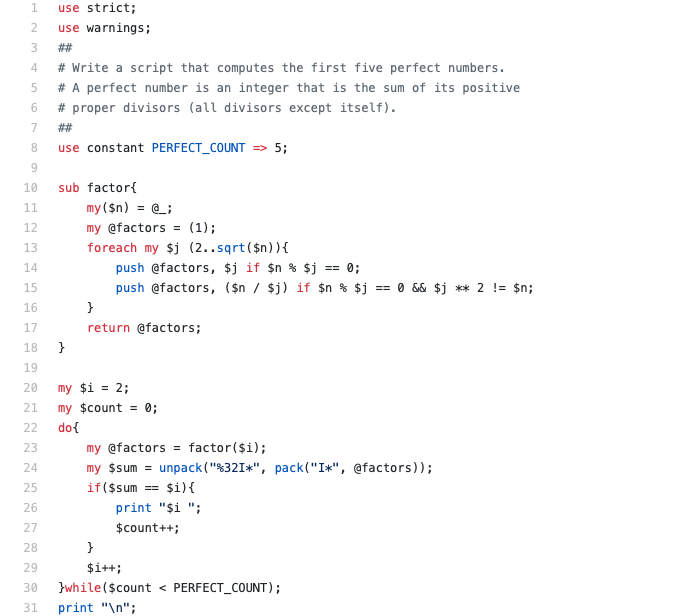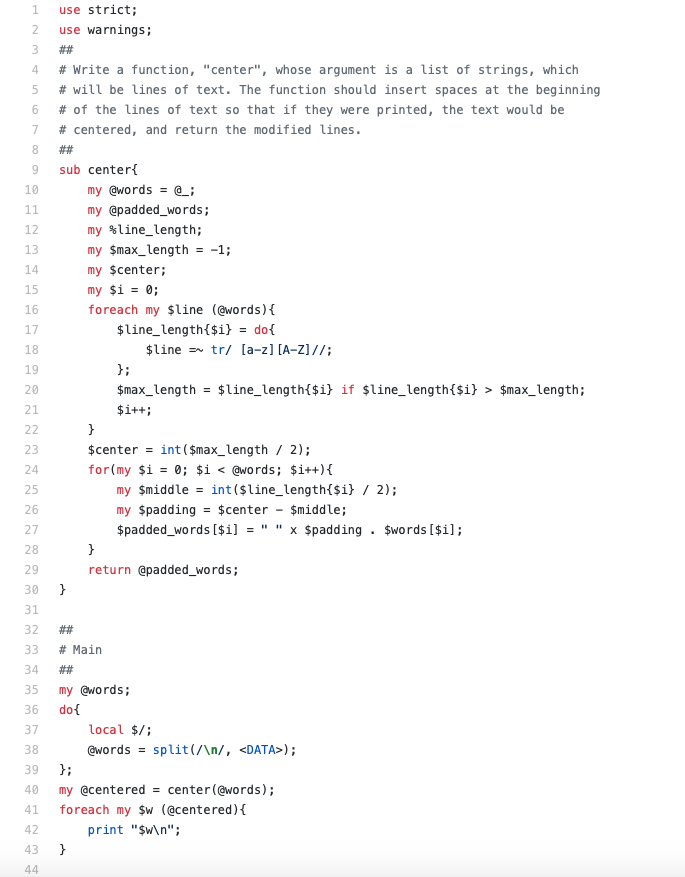RabbitFarm
2019-05-14
Perl Weekly Challenge 008
As with the previous weekly challenges the problem statements are short and are included in the first comment of the code. The code blocks shown link to GitHub Gists.
Part 1
This is straightforward enough of an implementation, without much code that requires a lot of explanation. For each candidate number we compute the factors and then add them up. If the sum of the factors is equal to the number itself it's perfect, print it and continue the search. I am re-using the pack/unpack trick to do the summing, like I have done before. So what could go wrong!?!?
Look at the sample run below though. I executed it use the time command. time is a quick way to see just how long a command takes to execute and here we see that to find the first five the above code takes nearly four and half hours!
Sample Run
$ time perl perl5/ch-1.pl
6 28 496 8128 33550336
real 257m33.621s
user 255m52.169s
sys 0m24.603s
The reason for this long run time is that Perfect Numbers become extremely sparse very quickly. The first four are typically found within seconds but the fifth takes the rest of the time because 33,542,208 numbers must be checked before it is found. Even a fast interpreted language like Perl running on modern hardware will take a long time to examine so many numbers. So how to make things faster? There are three ways:
- Algorithmic improvement
- Parallelization
- Write the computationally intensive parts in a compiled language such as C++.
The answer for this problem is definitely (1). Useful properties of Perfect Numbers are well documented. A good web page to reference would be http://mathworld.wolfram.com/PerfectNumber.html. There you would find that you can compute Perfect Numbers in several direct ways due to properties related to Triangular Numbers, Mersenne Primes, and Hexagonal Numbers. The compute time to find the first five would be at most a few seconds even when written in an interpreted language such as Perl when running on contemporary hardware.
Even though (1) is the best answer for this and most any performance problem you may ever encounter (2) and (3) are worth discussing because in many practical situations they offer the best solution (usually in terms of time and money!).
(3) is discussed in detail here. The results are that we can find a ~14x speedup, from 257m33.621s to 19m31.171s.
A combination of (2) and (3) is discussed here and results in a ~45x speedup, from 257m33.621s to 5m55.348s.
Part 2
Sample Run

Details
The logic used here is that we must first find the longest line. Once we determine the longest line find the midpoint of that line. The midpoint of the longest line will be where we want to center all the other lines. The padding needed is computed as the difference between the middle of the longest line and the middle of any other line. In the case of the longest line itself no special handling is needed, its padding length is zero. I use the same eval() and tr() method to find line lengths as I have done before.
posted at: 19:19 by: Adam Russell | path: /perl | permanent link to this entry

